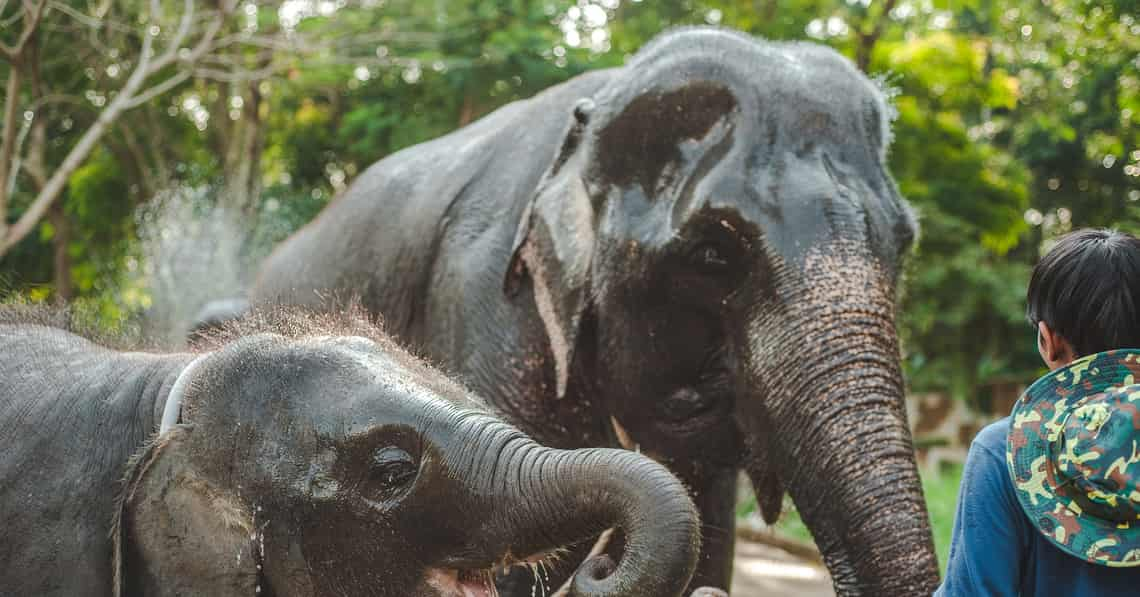In the past, elephants were used in the forestry industry. The cancellation of forest concessions in 1989 resulted in thousands of elephants being unemployed, many finally finding a home and a living as part of the tourism industry, which soon grew into an important factor contributing towards the economy and society of Thailand. However, the welfare of captive and domesticated elephants is a hotly debated issue among tourists as well as those within the industry as various stakeholders disagree about working conditions and the overall management of elephants.
This study examined 33 elephant camps in northern Thailand, consisting of 627 elephants, to identify the type of work and to explore management factors. The health and welfare of elephants were asessed, including body integrity, stress levels, glucocorticoid metabolite, and stereotypic behaviours. The study also looked into the relationships of management factors that affect health and welfare by using statistical analysis to find multivariate relationships.
The results of the study show a great diversity in the population structure, methods of working and raising of elephants from their residence through to elephant control, nutrition control, health care and breeding including the management of elephant camps as a whole.
Most of the elephants in this study were found to be overweight with an everage score of 4 (1 very skinny, 2 skinny, 3 fit, 4 fat, 5 very fat). The female elephants tend to be more overweight than the male elephants. Elephants receiving a few meals a day are more overweight than elephants receiving multiple meals a day. The elephants that receive an excess of supplementary food are more overweight than the elephants which receive less supplementary food. Elephants which do not participate in riding activities tend to be more overweight than those used for tourist riding activities. Overweight elephants have also been found to have high-stress levels, high glucose levels, high-fat levels, high cholesterol and high-density lipoprotein which negatively affects their long-term health.
Most elephants have slight levels of foot health problems such as nails or minor injuries with a complete score of 1 (0 no foot health problems, 1 minor problems, 2 moderate problems, 3 severe problems). Older elephants and elephants that work for many hours will have higher foot health scores.
Most elephants do not have skin wounds with a complete score of 0 (0 no wound, 1 less severe wounds, 2 very severe wounds). The wounds caused by howdahs are very rare. Older elephants have higher wound scores than younger elephants. Male elephants have higher wound scores than female elephants and elephants whose mahouts carry hooks have higher wound scores than elephants whose mahouts do not carry hooks. Elephants that have sandy areas on which to rest at night have fewer wounds than elephants who rest on the normal ground.
Elephants that are work appropriately have lower stress levels than the elephants who are merely milling about and looked at by tourists. However, during the tourist season, elephants have higher stress levels than in the low season. Therefore, the study concludes that elephants must be worked, but with proper timing, structure and variety which benefits elephants. On the whole though, elephants in the forest and those who live in herds have lower stress hormones than elephants in camps of any kind. Elephants living with mahouts which carry hooks and use chains are not found to be more stressed than those without. Older elephants have lower stress levels than younger elephants and male elephants have lower stress levels than female elephants.
A total of 25% of all elephants surveyed were found to have repeated behaviours which reduce their stress, as it is believed that repeated behariour are strategies to reduce stress naturally.
Elephant camps require management adjustments to prevent overweight elephants as well as foot and wound health problems and more effort needs to be made to find ways to reduce stress in elephants.
The results of this study will be developed into standards or guidelines which are based on science for further development of elephant management in tourism businesses.
If you want to learn more about the captive Asian debate, we highly recommend you read these articles:
Naka Foundation Changing Narrative of Captive Elephants
Living with Elephants: dispelling myths, setting standards and changing attitudes
This study was conducted by: Pakkanut Bannasith, DVM, PhD1, Dr. Treepradab Norkaew, Chatchote Thitaram, DVM, PhD, Assistant Professor Dr.Jaruwan Khonmee, Associate Professor Dr.Korakot Nganvongpanit, Dr. Veerasak Punyapornwithaya, Assist.Prof.Dr. Khanitta Phanthuree, and Dr. Janine L. Brown.
